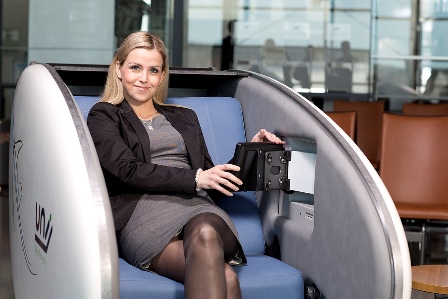
I’ve got a story this week in the CNBC Road Warrior section all about airport hotels and some of the newest ones on the horizon.
Here are the highlights of that story.
Skip the shuttle: At-the-airport hotels take flight
With the official ribbon-cutting this week for a new four-star hotel at Minneapolis-St. Paul International, travelers now have one more major domestic airport where it is possible to skip the hotel shuttle and go directly from a hectic day of flying to a comfortable night’s sleep in a fluffy bed.
The 12-story, 300 room InterContinental Minneapolis-St. Paul Airport Hotel is connected to Terminal 1 via a sky bridge and has a spa, conference center and its own security checkpoint, offering quick access to the gates for those flying with just hand baggage.
MSP’s hotel is a public-private partnership (with Graves Hospitality) and is just the latest example of airports recognizing that in addition to offering convenience, having an on-site hotel is a revenue generator that can give an airport a competitive edge.
In 2015, Denver International Airport opened the doors to the 519-room Westin Denver International Airport hotel and conference center on the plaza adjacent to the Jeppesen Terminal. In addition to on-site dining and an indoor pool and fitness area, the hotel has an extensive art collection and commuter rail access to the city.

Courtesy Denver Westin International Airport
At Dallas/Fort Worth International Airport there are two hotels directly accessible from the terminals: a Hyatt Regency DFW at Terminal C and a Grand Hyatt DFW inside Terminal D with an outdoor rooftop pool overlooking the runways, multi-dining options and a Terminal Re-Entry program that gives guests access to the amenities inside the terminals.’
The Wayne County Airport Authority recently partnered with Starwood Hotels and Resorts to give the Westin Detroit Metropolitan Airport Hotel attached to the McNamara Terminal at Detroit Metropolitan Airport a $15 million makeover.
The hotel has conference rooms, day rates and a fitness enter with a pool offering runway views (day passes $15), and a TSA security checkpoint adjacent to the lobby. Hotel staff can also arrange gate-passes into the terminal for guests.

Miami’s airport has had an in-terminal hotel since 1959. The Miami International Airport Hotel now sits pre-security in Concourse E and offers day rates as well the first airport Air Margaritaville restaurant (on the lobby level) and, on the top floor, the country’s first Viena Brazilian restaurant.
At Orlando International Airport, the 25 year-old in-airport Hyatt Regency Orlando International Airport is owned by the airport authority and operated by Hyatt,

“The hotel serves as an extension of the airport’s goal to provide the best ‘Orlando Experience’ possible and is a wonderful amenity for all airport customers,” said airport spokeswoman Carolyn Fennell, “It is also a significant driver of the airport’s annual revenues.”
Among a variety of perks offered guests staying in the Orlando airport hotel is luggage delivery service. “Just get off the plane, come to the front desk, provide your bag claim ticket and our bellmen will deliver the bags directly to your room,” said Fennell.
Elsewhere in the U.S., travelers will find hotels inside or connected to several other airports, including Houston’s George Bush Intercontinental Airport (a Marriott), Boston Logan International Airport (a Hilton), Philadelphia International Airport (a Marriott), Hartford’s Bradley International Airport (a Sheraton) and Chicago O’Hare, which offers day $20 passes (with discounts for Hilton Honors members) to the indoor pool and extensive fitness center.
Airport hotels of future
In the next few years, travelers will be able to check into on-site hotels at more airports.
A Grand Hyatt with 351 rooms, 15,000 square feet of meeting space and direct access to the AirTrain light rail system is scheduled to open in summer 2019 at San Francisco International Airport.
An InterContinental hotel is set to open at Hartsfield-Jackson Atlanta International Airport in 2020.
And the Chicago Department of Aviation hopes to both build a new hotel next to Terminal 5 and renovate and modernize the current O’Hare Hilton by 2023.

In the meantime, work is progressing on the much-anticipated TWA Hotel at John F. Kennedy International Airport.
When it opens in early 2019, Eero Saarinen’s iconic 1962 TWA Flight Center will be transformed into a swank 505-room retro-modern hotel with 50,000 square-feet of art, meeting and event space; a 200,000 square-foot lobby that may lay claim to the title of the largest hotel lobby in the world; and a rooftop observation deck with a pool and an aviation museum.
Have you stayed at an in-airport hotel- or choose these over near-the-airport hotels? Please share your comments and suggestions in the comment section below.




